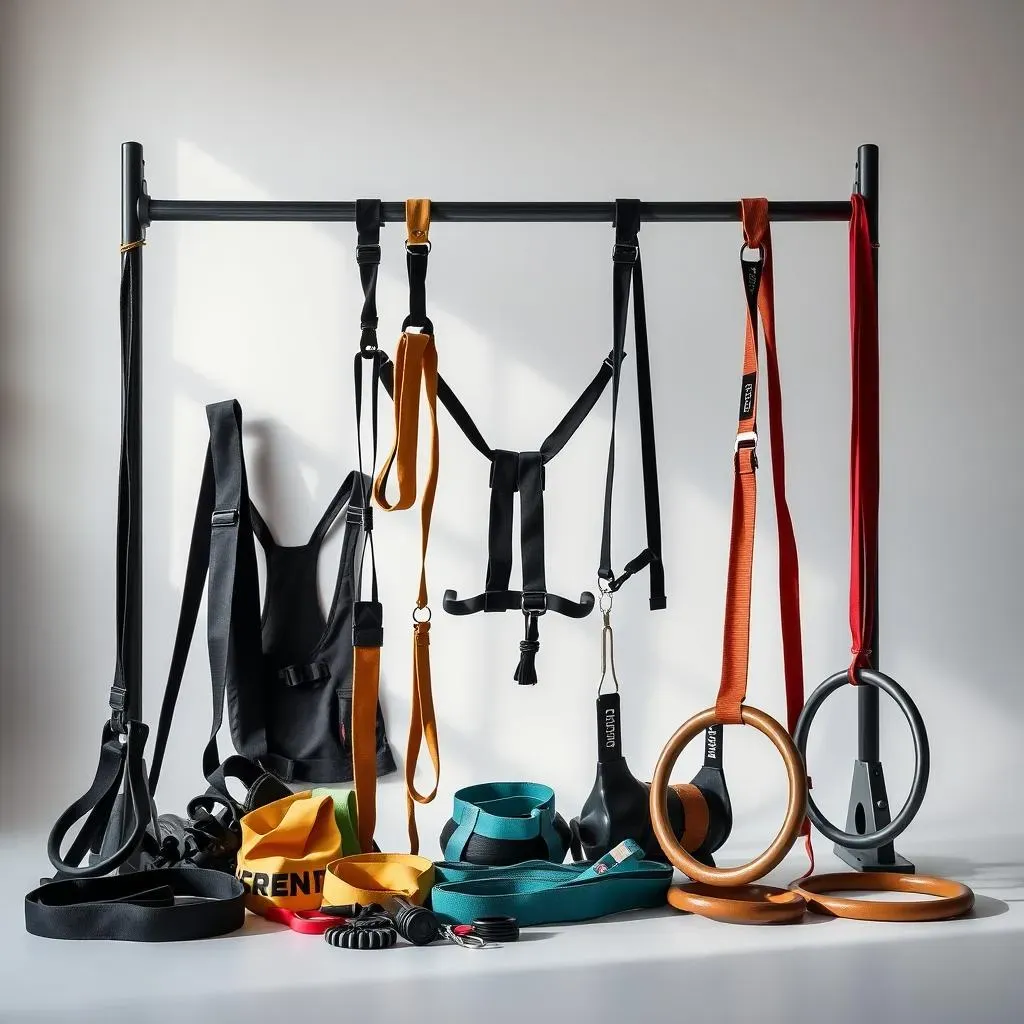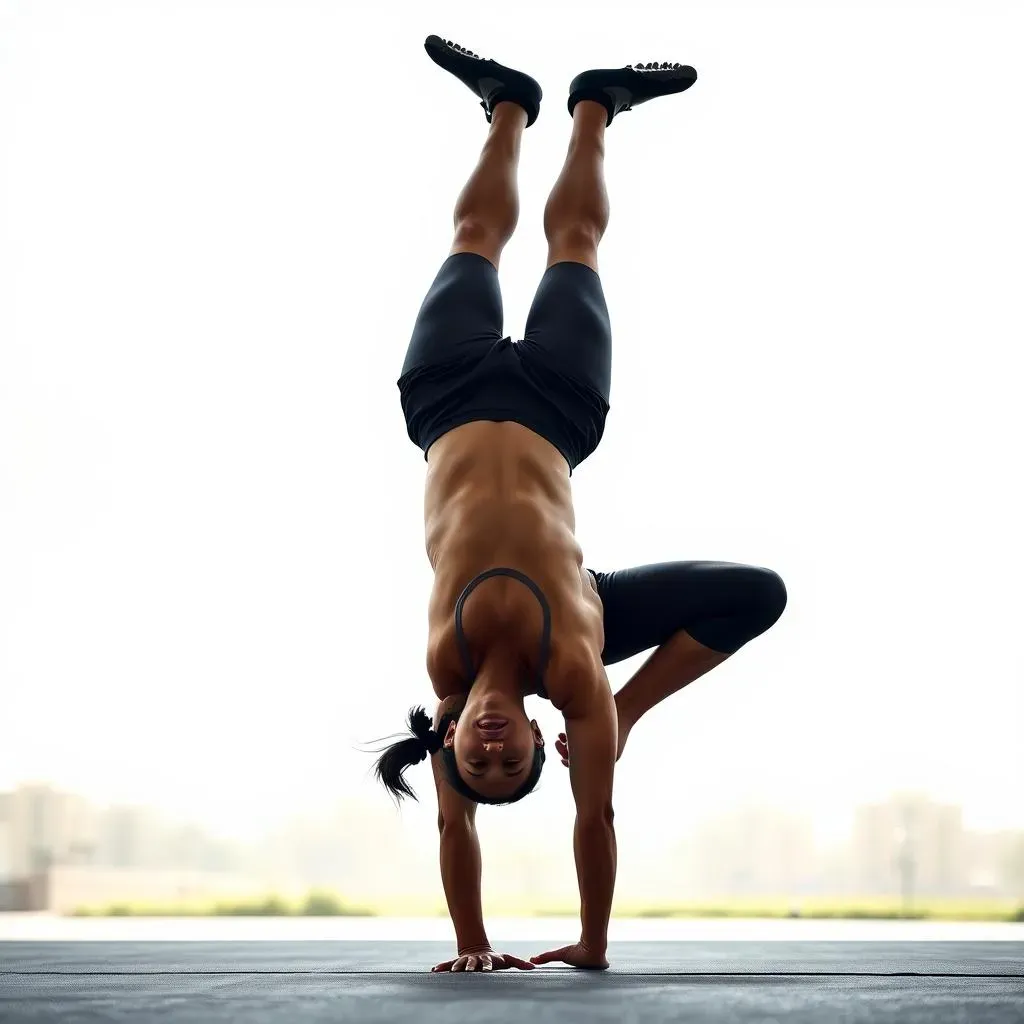Table of Contents
Are you looking to improve your physical fitness and overall well-being without the need for expensive gym memberships or equipment? If so, calisthenics may be the perfect solution for you. Calisthenics is a form of exercise that uses body weight as resistance to build strength, burn fat, and enhance flexibility. The best part? It can be done anywhere, at any time, making it an ideal choice for those with busy schedules or limited access to gym facilities. In this article, we'll explore how to get into calisthenics, providing you with a comprehensive guide to get you started on your fitness journey. From the basics of calisthenics to effective exercises and workout plans, we'll cover everything you need to know to begin your calisthenics journey and achieve your fitness goals.
Getting Started with Calisthenics: Tips for Beginners

Getting Started with Calisthenics: Tips for Beginners
Understanding the Basics of Calisthenics
Calisthenics is a form of exercise that utilizes body weight as resistance to build strength, endurance, and flexibility. It's an excellent way for individuals to improve their overall fitness without the need for specialized equipment. When getting started with calisthenics, it's essential to begin with exercises that match your current fitness level. For beginners, this might include modified versions of classic exercises like push-ups, squats, and lunges. As you progress, you can gradually increase the difficulty by changing the angle, adding weight, or incorporating resistance bands.
Before starting any workout, it's crucial to warm up properly. This can be as simple as jogging in place, jumping jacks, or dynamic stretching. Warming up helps prevent injuries and prepares your muscles for the upcoming exercise. Additionally, listening to your body and taking regular breaks is vital to avoid fatigue and prevent overexertion.
Exercise | Modification for Beginners | Progression |
|---|---|---|
Push-ups | Knee push-ups or wall push-ups | Diamond push-ups, decline push-ups |
Squats | Bodyweight squats or chair squats | Goblet squats, sumo squats |
Lunges | Walking lunges or stationary lunges with support | Alternating lunges, plyometric lunges |
Setting Realistic Goals and Tracking Progress
Setting specific, achievable goals is key to staying motivated and tracking progress in calisthenics. Start by identifying what you want to achieve, whether it's increasing strength, improving flexibility, or enhancing endurance. Break down larger goals into smaller, manageable milestones. For example, if you're aiming to do a certain number of pull-ups, start with assisted pull-ups and gradually increase the number as you build strength.
Tracking your progress is also essential. Keep a workout log to monitor the exercises you've completed, the number of repetitions, and the difficulty level. This will help you identify areas where you need improvement and celebrate your successes. Remember, calisthenics is a journey, and patience is vital. Don't be discouraged by setbacks or plateaus—instead, focus on consistent progress and celebrate small victories along the way.
- Set specific, measurable goals
- Break down large goals into smaller milestones
- Keep a workout log to track progress
- Stay consistent and patient
Effective Calisthenics Exercises for a FullBody Workout

Effective Calisthenics Exercises for a FullBody Workout
Upper Body Exercises
When it comes to building a strong upper body through calisthenics, there are several effective exercises to consider. Push-ups are a classic choice, working the chest, shoulders, and triceps. For beginners, knee push-ups or wall push-ups can be a great starting point. As you build strength, you can progress to diamond push-ups, decline push-ups, or even single-arm push-ups for an added challenge.
Another essential upper body exercise is the pull-up. If you're new to calisthenics, you might start with assisted pull-ups using a resistance band or a partner to help lift you up. As you get stronger, you can move on to traditional pull-ups and eventually try more advanced variations like L-sits or leg raises while in a pull-up position.
Exercise | Modification for Beginners | Progression |
|---|---|---|
Push-ups | Knee push-ups, wall push-ups | Diamond push-ups, decline push-ups, single-arm push-ups |
Pull-ups | Assisted pull-ups with resistance bands | Traditional pull-ups, L-sits, leg raises |
Lower Body Exercises
For the lower body, squats and lunges are fundamental exercises in calisthenics. Squats work multiple muscle groups, including the quadriceps, hamstrings, glutes, and core. Beginners can start with bodyweight squats or chair squats, eventually moving on to more challenging variations like goblet squats or sumo squats.
Lunges are another effective exercise for the lower body, targeting the quadriceps, hamstrings, and glutes. Start with walking lunges or stationary lunges with support, and as you build strength, progress to alternating lunges or plyometric lunges for added intensity.
- Squats: Works quadriceps, hamstrings, glutes, and core
- Lunges: Targets quadriceps, hamstrings, and glutes
- Calf raises: Strengthens calf muscles
- Glute bridges: Engages glutes and hamstrings
Helpful Equipment for Calisthenics: Enhance Your Workout

Helpful Equipment for Calisthenics: Enhance Your Workout
Essential Equipment for Calisthenics
When it comes to calisthenics, while bodyweight exercises are the core of the practice, incorporating certain equipment can enhance your workout, provide variety, and help you progress to more challenging exercises. One of the most useful pieces of equipment for calisthenics is the resistance band. Resistance bands are lightweight, portable, and inexpensive, making them perfect for workouts on-the-go. They can be used to assist with pull-ups, add resistance to exercises like banded squats, or even as a tool for stretching.
Another essential piece of equipment is a pull-up bar. For those just starting out, a doorway pull-up bar is a cost-effective and space-saving option. As you progress, you might consider investing in a free-standing pull-up bar or a portable pull-up bar that can be taken to the park or other outdoor locations.
Equipment | Benefits | Cost |
|---|---|---|
Resistance Bands | Portable, versatile, assists with pull-ups and adds resistance to exercises | $5-$15 |
Doorway Pull-up Bar | Space-saving, cost-effective, great for beginners | $20-$40 |
Free-standing Pull-up Bar | Sturdy, adjustable, ideal for advanced calisthenics | $100-$250 |
Advanced Equipment for Progression
As you become more advanced in your calisthenics journey, you may want to incorporate equipment that challenges you further. Dip belts are excellent for adding weight to dips, allowing you to increase the intensity of the exercise. Weight vests are another great tool, enabling you to add resistance to your workouts without having to rely on external weights.
Parallettes are also a valuable addition to a calisthenics routine. They allow for a deeper range of motion in exercises like L-sits and handstand push-ups, helping to improve overall strength and control. For those interested in gymnastics or more dynamic movements, gymnastics rings can provide an intense workout while improving grip strength and overall upper body power.
- Dip Belts: Adds weight to dips for increased intensity
- Weight Vests: Allows for added resistance without external weights
- Parallettes: Enhances exercises like L-sits and handstand push-ups
- Gymnastics Rings: Provides a challenging workout for upper body and grip strength
Creating a Calisthenics Workout Plan: Setting Goals and Tracking Progress

Creating a Calisthenics Workout Plan: Setting Goals and Tracking Progress
Setting Realistic Goals for Your Calisthenics Journey
Creating a workout plan begins with setting realistic goals. What do you want to achieve through calisthenics? Is it to build strength, increase flexibility, or improve overall endurance? Perhaps you're looking to master specific exercises like pull-ups or handstand push-ups. Whatever your goal, it's essential to make it specific, measurable, achievable, relevant, and time-bound (SMART). For example, instead of saying "I want to get stronger," set a goal like "I will be able to do 10 pull-ups in a row within the next 3 months."
Breaking down larger goals into smaller, manageable milestones is also crucial. If your goal is to perform a certain number of pull-ups, start by doing assisted pull-ups and gradually increase the number as you build strength. Celebrate each milestone achieved, no matter how small, to keep yourself motivated and engaged.
Goal | Specific Milestones | Timeline |
|---|---|---|
Perform 10 pull-ups | Start with 3 sets of assisted pull-ups, progress to 3 sets of 3 pull-ups, then 3 sets of 5 pull-ups | 3 months |
Master handstand push-ups | Begin with wall-assisted handstand push-ups, move to freestanding handstand push-ups against a wall, then progress to freestanding handstand push-ups | 6 months |
Structuring Your Workout Plan for Success
A well-structured workout plan is essential for making consistent progress in calisthenics. Start by identifying the exercises that work multiple muscle groups at once, such as squats, push-ups, and lunges. These exercises provide a solid foundation for a full-body workout. Balance your routine by including exercises that target specific areas, like dips for triceps and rows for back muscles.
It's also important to vary your routine to avoid plateaus and prevent overuse injuries. Consider alternating between upper body and lower body days, or splitting your workout into endurance and strength days. Listen to your body and take rest days as needed. Adequate recovery is crucial for muscle growth and repair.
- Upper Body: push-ups, pull-ups, dips, rows
- Lower Body: squats, lunges, calf raises, glute bridges
- Core: planks, Russian twists, leg raises
Tracking Progress and Adjusting Your Workout Plan
Tracking your progress is vital to understanding how your body responds to different exercises and workout routines. Keep a workout log to monitor the exercises you've completed, the number of repetitions, and the difficulty level. Adjust your routine as needed based on your progress. If you find that you're plateauing, consider increasing the difficulty of exercises by changing the angle, adding weight, or incorporating resistance bands.
Remember, calisthenics is a journey, and consistency is key. Stay motivated by celebrating small victories, and don't be afraid to seek guidance from more experienced practitioners or online resources. With dedication and the right mindset, you'll be achieving your calisthenics goals in no time.
Workout | Exercises | Repetitions | Difficulty |
|---|---|---|---|
Monday (Upper Body) | Push-ups, pull-ups, dips | 3 sets of 10 reps | Medium |
Wednesday (Lower Body) | Squats, lunges, calf raises | 3 sets of 12 reps | Hard |
Friday (Core) | Plank, Russian twists, leg raises | 3 sets of 15 reps | Easy |
Conclusion: Unlocking the Power of Calisthenics
Embarking on a calisthenics journey can be a life-changing decision, offering a path to physical fitness, mental well-being, and a stronger connection with your body. By understanding the basics, incorporating effective exercises, and utilizing the right equipment, you can create a personalized workout plan that suits your goals and lifestyle. Remember, the key to success in calisthenics is consistency, patience, and listening to your body. As you progress, don't hesitate to explore new exercises and challenge yourself to new heights. With dedication and the right mindset, you'll be amazed at the transformations you can achieve through calisthenics. So, start your journey today and discover how to get into calisthenics, unlocking a stronger, healthier you.
